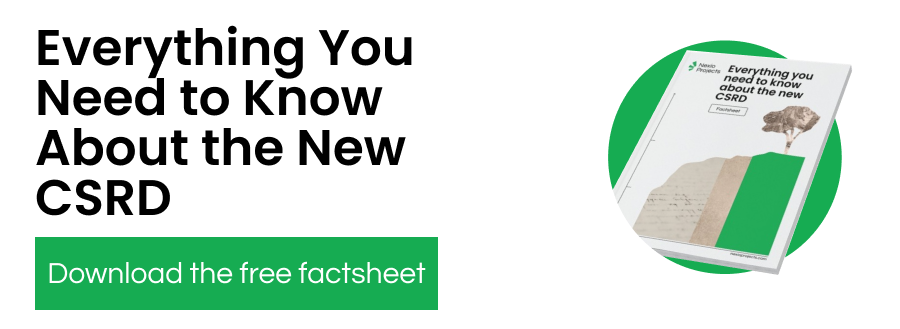 New York’s Climate challenge: Getting ready for disclosure requirements
New York’s Climate challenge: Getting ready for disclosure requirements
With around 50,000 companies in Europe required to align with the new Corporate Sustainability Reporting Directive (CSRD), you’d better be ready to meet the new reporting requirements!
Even though we are approaching the initial 2024 deadline for the adoption of the CSRD, there is still a lot of buzz and uncertainty around this new EU regulation.
With this piece, we will go through the latest 2022 updates on the CSRD and highlight the implications for your business.
But before getting started, we recommend you to read our article on EU Sustainability Reporting to get a thorough understanding of the evolution of the European Reporting Directives over time.
Framing the concept
Adopted on the 21st of April 2021, the Corporate Sustainability Reporting Directive (CSRD) will substitute the Non-Financial Reporting Directive (NFRD).
The new Directive will widen the pool of companies asked to comply and reinforce disclosure’s quality, consistency and transparency requirements.
The main goal of the CSRD consists in increasing the verifiability, accessibility and coherence of non-financial data. Moreover, the Directive aims to enhance alignment between non-financial and financial standards.
What to disclose?
The reporting requirements under the CSRD are still in development. Nonetheless, companies will have to disclose:
- Material issues and potential future risks;
- Information about the long-term sustainability goals and progress towards their achievement;
- Information to link reporting with other recent European regulations, such as the Sustainable Finance Disclosure Regulation (SFDR) and the EU Taxonomy.
Differently from the NFRD, which mainly focuses on past performance, the CSRD gives a complete representation of organisations’ sustainability progress.
Finally, the new Directive makes it mandatory to have the report in electronic (XHTML) format and undergo an auditing process.

Who should disclose according to the new CSRD?
The CSRD extends the range of companies obliged to disclose their non-financial information.
Under the previous NFRD, companies required to report were public-interest organisations with more than 500 employees.
With the CSRD coming into force, sustainability reporting will become mandatory for all listed companies, as well as for those that meet at least 2 of the following criteria:
- More than 250 employees;
- More than 40 million turnover;
- More than 20 million on the balance sheet.
Timeline
The Council of the European Union has decided to postpone the enactment of the CSRD. Moreover, the deadlines to comply with the Directive will vary based on the nature of the reporting entity.
This segmentation considers the resources organisations have to complete the transition. Therefore, three different groups have been identified:
- Organisations already falling within the scope of the NFRD will be subject to the CSRD starting in January 2024 and begin reporting in 2025 on 2024 data;
- Large companies not currently subject to the NFRD will fall under the CSRD starting in January 2025 and begin reporting in 2026 on 2025 data;
- Liste small & medium-sized enterprises (SMEs) and small credit institutions and insurance organisations. They will be subject to the CSRD from the 1st of January 2026 and start reporting in 2027 on 2026 data.
.png?width=1544&name=Figure%201.%20Updated%20Timeline%20(1).png)
As of now, we are waiting for the European Parliament and the Member States in the Council to finalise the legislative text based on the European Commission’s proposal.
Simultaneously, EFRAG (European Financial Reporting Advisory Group) is responsible for developing the draft for the new reporting standards.
How to prepare for the CSRD?
To make sure you’re going to be compliance-ready, read the following key steps you should go through in the upcoming months:
- See where you stand: map your existing reporting system and spot the gaps against the CSRD requirements to identify your priorities;
- Apply the double materiality principle: make sure you are disclosing all the ESG topics you are having an impact on. Likewise, report on those issues that are influencing your business model.
- Map your risks: when developing your sustainability strategy, set up a risk management system to promptly act on your material topics.
- Track your achievements: develop targets and KPIs that will allow you to track progress over time and systematically report on that.
- Start looking into report auditing: as the new CSRD will request companies’ reports to undergo third-party verification, it’s advised to start thinking about the process of auditing your sustainability information.
While we wait for a definitive version of the new reporting directive, make sure to have your reporting procedures up to and running to keep track of your sustainability achievements and ambitions!
In the meantime, have a look at our previous article on EU Sustainability Reporting and download our factsheet Everything You Need to Know About the New CSRD. You will be fully ready!











